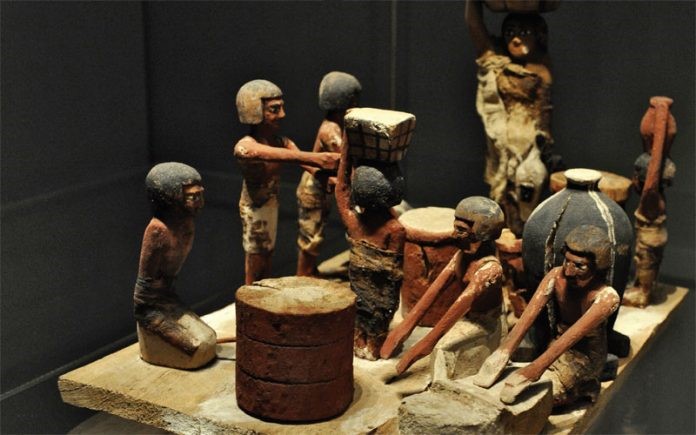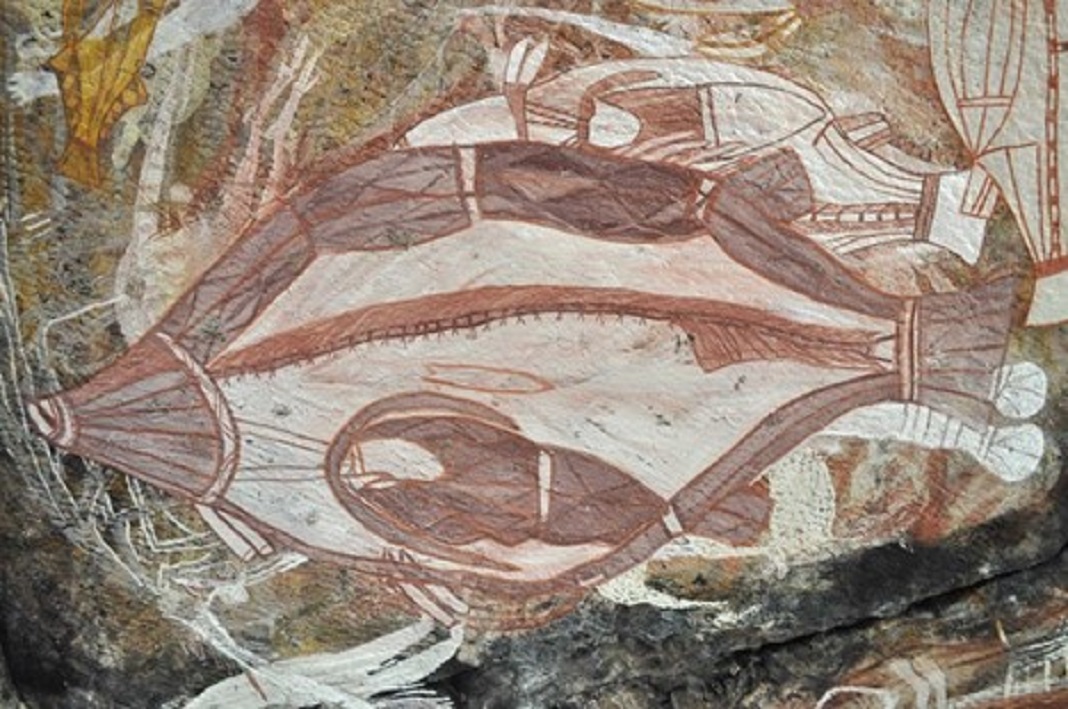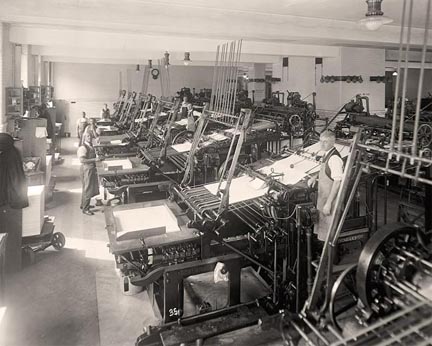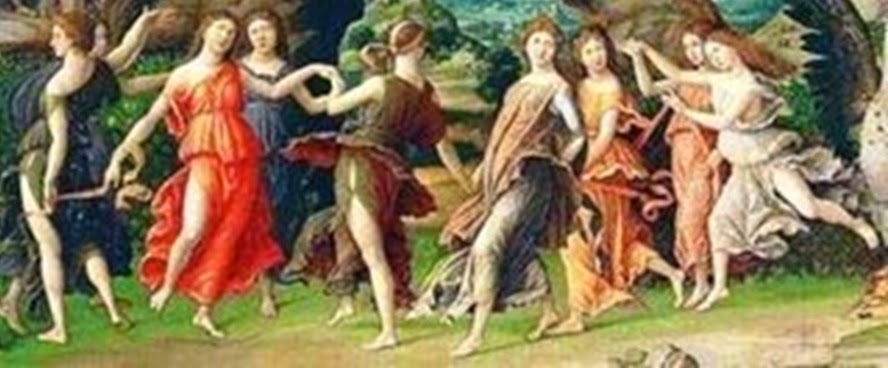It is certain that when the first representatives of our species, Homo sapiens, left Africa, the reason was not to build skyscrapers or spacecraft, but they left Africa for a trivial reason: the need for food.
The hunters have traveled behind wildebeests, reaching unknown realms and slowly colonizing the entire planet. Then the large rivers such as the Nile, the Tigris, the Euphrates, the Indus or the Yangtze have provided ideal home for the first agrarian societies.
Behind the amazing inventions from ancient times, behind the great wars of that era was the need for food. And the present still bears the seal of some historic decisions taken for reasons that few would guess – people’s food preferences. Some of these episodes may seem hilarious, others may seem serious, but there is no doubt that they really happened and they are extremely important for what we are today.
The Punic Wars aka a war for grain
From 264 BC until 146 BC, the Romans and Phoenician Carthaginians were involved in some “tooth and nail” silent conflicts, for control over trade routes in the Mediterranean; these conflicts are best known as the Punic Wars. But before talking about them, it should be noted an extremely interesting aspect regarding the motivation of starting these conflicts.
In the ancient world, throughout the Mediterranean, diet was based on three main foods: bread, wine and oil. These foods were so important that many people considered them sacred, not only in polytheistic religions, such as Greco-Roman, but even in monotheistic religions such as Judaism and Christianity.
And all these foods were in abundance in Sicily. No less important, the gold generated by trading such foods was quite appetizing for any state pretending to be a world power.
Therefore, after a conflict between the Greek king of Syracuse, Hieron II, and the Mamertines (former mercenaries who occupied the city of Messina, turning it into a raid base over the farm settlements), the latter, in order to avoid the defeat, asked for help from Carthage. A proposal that would fit like a glove with the interests of maritime power in North Africa. And just like the great powers usually do, Carthage offered military aid to the Mamertines, but has not retired after settling the conflict.
Dissatisfied with the new situation, the Mamertines have turned their attention to a new ally: Rome. What they did not know was that the Romans were showing the interest as the Carthaginians towards the island in southern Italy. The consequence? The first Roman Carthaginian dispute breaks out.
The Mamertines are the first to disappear following the dispute, and later, the war history would lead to the extermination of the Carthaginians and wiping their capital off the face of the earth. The Romans defeated their most feared rival and made their way to conquering the largest part of the world they knew.
The milk and Columbus’ opportunity
In 1003, two Scandinavian explorers, Leif and Thorvald Erikson, both sons of famous Erik the Red, touched the North American shores along with a 35-person-crew, bringing their countrymen stories about an extremely rich world, where the wood, salmon and vines were abundant (they had called the newly discovered territory “Vinland” – the Land of Wine).
But Leif, the expedition leader, was not so interested in setting up a colony, but he was interested in the idea of discovering new lands for the others, so he came back after just one year with a cargo of grapes and wood and he spent the rest of his life preaching Christian teachings among his peers in Greenland. But all these stories of such a rich and prosperous land lit people’s imagination.
Thus, in 1010, Thorfinn Karlsefni, another Scandinavian explorer, starts on the same route described by Erikson brothers – the Land of Wine. Freydis Eiriksdottir, sister of Leif and Thorvald Erikson, accompanied them on this trip. The expedition, whose members numbered 140 individuals this time, was intended to establish a permanent settlement, following the already known model of Viking colonists (settlers).
Thorfinn found base of his predecessors and started to extend the original settlement. To avoid conflicts with Native Americans (baptized by Europeans “Skraelings” – savages), the Scandinavian explorer initiated a trade with them, receiving hides, while they gave in exchange red fabrics; the Native Americans were showing a great interest in those fabrics.
What happened next is shrouded in mist. Most likely, after they finished all the red fabrics, Thorfinn’s men still wanted to do trade with Native Americans, so they offered them milk. They had no way of knowing that Native Americans were lactose intolerant.
With strong stomachaches and convinced they were victims of a poisoning attempt the Native Americans allegedly savagely attacked the Scandinavian camp, forcing the surviving settlers to return where they came from. It was the only attempt to colonize America, since then and up to Columbus. The Genovese had no way of knowing that a simple ceramic milk pitcher had given him the chance to write the world history?
Alcohol, caviar and… Orthodoxy
An extremely interesting and vivid testimony about a decision that turned out to be crucial including in the current geopolitics comes from the monk Nestor (1056 – 1114) and his chronicle on the history of Kievan Rus. More specifically, from the moment when Vladimir Sviatoslavich the Great (958-1015), prince of Kievan Rus, decided to remove the Slavic paganism and adopt of one of the great religions of that period.
But it was by no means a easy decision, especially that ambassadors from all religious centers insisted that Vladimir has to make a choice in this regard. On the other hand, Vladimir the Great knew the customs of his people, as well as those of his, and they should not be dismissed lightly.
After a conference with his boyars, in 987, the prince sent emissaries to obtain the necessary information about everything that interested him regarding the religious beliefs.
The first meeting was with the emissary who had studied Islam. From him he learned that Muslims are “very sad” and, even more important, they prohibit consumption of alcoholic beverages and pork. These were two reasons which made impossible any chance of adopting this religion by Rus. (“Drinking is the joy of all Rus. We cannot exist without this pleasure” – Vladimir remarked on the occasion).
Judaism was also rejected. After all, Jews had pretty much the same taboos as Muslims. People have been spreading false, malicious rumors about Hindus, as they were cannibals, but they were too far from Russian to be taken into account anyway. Only two options were left – Roman Christianity or Byzantine Christianity. But the Romans were fasting but too much, according to the view of his emissaries, while Christians in Constantinople, although they were also fasting, they were having dispensation to eat fish during Lent, so that the Russians would be able to feast with caviar even then.
A year later, in 988, Vladimir married Anna, sister of the Byzantine Emperor Basil II, and ordered all the inhabitants of Kievan Rus to renounce paganism and embrace the new Orthodox religion.
A kingdom for… a spice
If Ferdinand of Aragon and Isabella of Castile would have known where the Spanish Inquisition and the expulsion of non-Christians outside Spain could lead to, they probably would have Torquemada imprisoned in a monastery for the rest of his days. They didn’t do it, so that the great Dominican inquisitor was set to work with an unprecedented fervor.
Many Hebrew and Muslims were tortured and killed, deprived of wealth or forcibly converted to Christianity. Many others have left Spain, and directed their steps towards the most tolerant European country, the Netherlands. And their contribution to an already thriving economy has rapidly made its presence felt. In a time when European monarchs chose to fight the church or each other, Protestant Netherlands was open for business. The Dutch have replaced the Venetians and Florentines as international bankers.
The stock exchange, called Bourse, has been established in the mid 16th century, in Amsterdam. The Bank of Amsterdam was founded in 1609, with a section for international foreign exchange, with an Arabic check writing system and the government guarantee on the safety of deposits (with in the US emerged in 1933). The Florentine florin became the international currency and the Netherlands had control over the international trade in sugar, coffee, slaves, wine, salt, precious stones, grain, gold or silver.
But the most important contribution to the welfare of the Dutch came from the Spice Islands, Indonesia today. No wonder that the Dutch have established the Dutch East India Company in 1602, just two years after the British East India Company, but with practically the same purpose… spice trade. The Dutch company has quickly become a real state within a state, possessing quasi-governmental powers, including the ability to negotiate treaties, strike its own coins, and establish colonies.
Shortly after its foundation, the company breaks the Portuguese monopoly, which has persisted for almost a century, upon a very valuable spice, the nutmeg, a spice found only in three small Indonesian islands. Its value increased even more when the doctors of that time have recommended the nutmeg as the sole plague treatment. As the bubonic plague had struck Europe it’s easy to understand how prices have literally exploded.
England didn’t want to miss such an opportunity, but the confrontation with the Netherlands seemed costly, so British sailors chose another path. The maps of that time indicated that there is a new road to the East Indies, through northern Norway, then to the east. It was a big mistake, as most of the sailors who ventured to such an expedition died starved or frozen. So there was one single solution: the war.
In the confrontation between England and the Netherlands, the Dutch emerged victorious. So they took the lion’s share, what appeared to be the best piece of the business, the nutmeg islands. In order not to humiliate their opponents too much, and hoping for a future cooperation, the Dutch chose to cede a worthless American colony, New Amsterdam, to the defeated. And the English, to preserve a shred of pride, have changed its name. They simply named it… New York.
The bread revolution
It’s obvious that, as in each case presented so far, gastronomy and culinary preferences were important reasons for making decisions that are crucial in world history. They weren’t the only reasons, but their importance is undeniable. But regarding the French Revolution, it clearly cannot be kept apart from gastronomy.
At the end of the 18th century, the French were referred to as bread eaters anywhere in Europe – and rightly so. The bread was not only the staple food of the population, but it was also a source of national pride. French bread was supposed to be the best in the world.
There have been tensions between bakers and the population over 100 years before the French Revolution, and the state finds itself forced to control the bread making to avoid spontaneous uprisings. Bakers were therefore public officials and the police was controlling the bread making, in order for it to function optimally.
When the speculators have hidden large amounts of yeast to give the impression of a lack of this ingredient and to artificially increase the price of bread, the police intervened in force. Raids were carried out into the homes of all yeast traders, the merchandise was confiscated and sent to bakeries and the speculators were thrown into the Bastille cellars.
A baker needed police permission to change their job, but they also had certain advantages. Each baker received a booklet with which could rent a room in a hotel or eat at a tavern without paying money. This is how important was the bread making.
The bread had to be white, fluffy and have a certain consistency and weight. Moreover, every baker had to burn their name on every bread to avoid the commercialization of counterfeit bread. And a French worker was paying, on average, half of the daily salary only on bread.
In 1775, a large demonstration was held on the streets of Paris, when the inhabitants of the future City of Lights have received black bread instead of white bread. The bakers have changed the classic yeast (the baker’s yeast) with brewer’s yeast, which was making the dough easier to process, allowing the bread to ripen faster. Bakers were almost lynched, although the police allowed dissatisfied customers, especially women, to publicly beat the rogue bakers.
The French bread also needed salt. The French government, in an eternal desire to raise funds, has imposed a tax salt (Gabelle) only for the lower and the middle class of the population. The price of bread has increased dramatically, becoming equivalent to almost 90% of a laborer’s daily wage. In other cases, the price remained the same, but the bread has dropped in quality and it was an unpardonable offense for the French.
Tax collectors were committing unimaginable abuses. They would enter the houses of the poor even overnight, searching and raiding their places and forcing the humble people to pay huge taxes for salt use. Those who couldn’t pay would lose their little wealth and were imprisoned. As hunger and public violence were on the rise, King Louis XVI convened a general meeting of all social classes.
Those who wanted the change of fiscal policies have been placed on the left side, the moderates in the center, while the conservative nobles were positioned to the right. It was just a charade because nobles had all the power, so nothing has changed. On July 14, 1789, based on rumors that the king has mobilized the army to establish order among the population, people stormed the Bastille.
Three months later, on October 6, 1789, the bread disappeared from the Paris markets. It was the straw that broke the camel’s back. An angry mob was headed to Versailles, where guards were allied with the revolutionaries. The royal family was arrested and imprisoned in the Bastille. On the way to the prison, the crowd was taunting the king, the queen and the Dauphin, singing: “The baker, the baker’s wife and their son.”
Despite an escape attempt on 21 July 1791, Louis XVI and Marie Antoinette were captured near the border with Austria, brought to Paris and executed. The French never forgot that the queen, even though the information was later proven false, had said those sent to those sent to announce her that the peasants had no bread: “Let them eat cake!” (“Let them eat cake” is the traditional translation of the French phrase “Qu’ils mangent de la brioche!”)
History of coffee
- 8th century – emerges the legend of the “dancing goats”. According to the legend, an Ethiopian shepherd, Kaldi, noticed that his animals are becoming highly energetic after eating the fruits of a certain tree. Kaldi decided to try some and he discovers the properties of coffee.
- About 900 A.D – coffee is mentioned for the first time in the writings of the Arab physician Rhazes. He calls it “qahwa”, an abbreviation of the term “qahhwat al-bun” (wine of the bean)
- By 1500 – Muslim pilgrims spread coffee to Persia, Egypt, Turkey and North Africa.
- 1511 – Governor of Mecca closed down all of Mecca’s coffee houses and stops coffee consumption, arguing that it is prohibited by the Koran. The real reason was that people would gather in coffee houses and were making fun of him. This decision doesn’t have the expected effect, but the reverse.
- 1536 – Coffee is brought through the town of Mocha in Yemen. Thus arose Mocha coffee.
- 1699 – The Dutch began cultivation of coffee trees on the Indonesian island of Java. Coffee is known as Java.
- 1727 – The first coffee bush was planted in Brazil.
- 1773 – After the “Boston Tea Party” protest, the Americans refuse to drink tea and the American tradition of drinking coffee increased.
- 1788 – Santo Domingo offers half of the world’s coffee production.
- 1832 – Coffee replaced rum as the standard beverage of the United States Army.
- 1878-1880 – The global market is flooded by Brazilian coffee. The price of coffee drops precipitously and the coffee market is collapsing.
- 21th century – Brazil exports about a third of the world’s coffee production, followed by Vietnam. Coffee trade is one of the most profitable, nearly as profitable as the oil trade. Over 2.25 billion cups of coffee are consumed in the world every day.
History of tea
- 3000 BC – The first archaeological evidence of tea consumption in China.
- 3rd century BC – The earliest authentic reference to tea drinking in Chinese literature.
- 5th century – It is said that monk Bodhidharma, the transmitter of Chan Buddhism to China, snatched a knife and cut off his own eyelids, because he was so furious at himself for falling asleep during his vigil (meditation). The eyelids fell to the ground, and arose as the first tea plant of China.
- 7th century – The Chinese consider tea as a strong medicine and a secret to long life.
- 8th century – “The Classic of Tea”, the first known monograph on tea in the world, written by Lu Yu.
- 804 – Japanese monks brought tea to Japan.
- 1215 – Esai, the monk who introduced Zen Buddhism to Japan, writes a treatise on tea, called the “Kissa Yojoki”.
- 16th century – Sen Rikyu turns the tea ceremony into a veritable Japanese cultural event. Portuguese are the first Europeans to write about tea.
- 1610 – The Dutch bring teapots to Europe.
- 1650 – English coffee houses introduced tea in their menu. It was a huge success and a ritual was created: “The 5 o’clock tea”.
- 1689 – Tea is becoming a commodity highly appreciated in Russia, where is brought by camel caravans traveling, on average, a year to the destination.
- 18th century – Russians invented the samovar.
- December 16, 1773 – the “Boston Tea Party” protest took place; several American colonists threw 342 chests of tea into the sea, protesting against Britain’s tax policy. It is the moment that marks the beginning of the American Revolutionary War (the American War of Independence).
- 20th century – The invention of tea bags.
- The late 20th century – Americans consider tea as a strong medicine and a secret to long life.
History of the potato
- About 8000 BC – The potato is domesticated in Peru and Bolivia.
- 1537 – Spanish conquistadors taste potatoes for the first time.
- 1550 – Conquistadors brought potatoes to Spain.
- 1586 – The potato is served to Queen Elizabeth I of England. The chef cooks the plant flowers and throws the tubers.
- 1600 – The potato had entered France, via Switzerland.
- 1651 – German authorities were forcing people to cultivate potatoes.
- 1660-1688 – The potato becomes the favorite plant of the Irish; potato cultivation spreads rapidly and the population rises from 500,0oo to 1.5 million.
- 1672-1725 – Czar Peter the Great introduced the potato in Russia; The Russians quickly discover that potatoes can be distilled and transformed into alcohol.
- 1760-1840 – Irish population, whose diet was based mainly on potatoes, increases by 600%, reaching 9 million inhabitants.
- 1780 – King Louis XVI tries to convince the French peasants to cultivate potatoes, but fails. Doctor Antoine Parmentier advised him to grow potatoes in the palace of Neuilly and guard the potatoes with armed guards to give the impression of valuable crops, to make potatoes seem valuable. Peasants steal the potatoes and plant them, which in fact was the king’s goal.
- 21st century – The potato is one of the four most important food crops in the world. Over 200 million people base their diet mainly on potatoes. Russia is the world’s largest potato producer.








